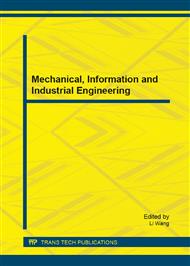p.900
p.904
p.908
p.912
p.918
p.922
p.929
p.933
p.939
Coal Transportation Network Optimization Model Based on Power Source Distribution
Abstract:
Coal is the important fuel and industrial raw materials in my country, and it accounts for 70% of total energy production and consumption in our country, and power plants’ coal consumption accounts for more than half of national total coal consumption. The research of electric-coal supply chain related to coal production place, coal transit place and consumption place (power plant). Due to there are many nodes like these three kinds coal transportation in the market, so the project that integrates every nodes into unified transportation optimization network has the function of reducing coal consumption and saving transportation costs. The paper constructs coal transportation analysis model, electric-coal supply and transportation path dynamic optimization model based on electric-coal transportation network analysis, and make effective analysis for choosing electric-coal transportation path. The paper also puts forward electric-coal supply chain optimization measures from electric-coal supply chain integration and ports building.
Info:
Periodical:
Pages:
918-921
Citation:
Online since:
March 2015
Authors:
Keywords:
Price:
Сopyright:
© 2015 Trans Tech Publications Ltd. All Rights Reserved
Share:
Citation:


